581 Mother Gaston Boulevard, a Bastion of Knowledge in Brownsville
Editor’s note: An updated version of this post can be viewed here. Brooklyn, one building at a time. Name: Stone Avenue Library Address: 581 Mother Gaston Boulevard Cross Streets: Corner Dumont Avenue Neighborhood: Brownsville Year Built: 1914 Architectural Style: Jacobean Revival Architect: William B. Tubby Other works by architect: Three other Carnegie Libraries, as well…

Photo by Kate Leonova for PropertyShark
Editor’s note: An updated version of this post can be viewed here.
Brooklyn, one building at a time.
Name: Stone Avenue Library
Address: 581 Mother Gaston Boulevard
Cross Streets: Corner Dumont Avenue
Neighborhood: Brownsville
Year Built: 1914
Architectural Style: Jacobean Revival
Architect: William B. Tubby
Other works by architect: Three other Carnegie Libraries, as well as fire houses, police stations, factory buildings, row houses, stables and free-standing mansions in Park Slope, Clinton Hill, Brooklyn Heights and other parts of Brooklyn and Manhattan. Best known for his Pratt Institute buildings and his house for Charles M. Pratt at 241 Clinton Avenue and the William Childs house at 53 Prospect Park West
Landmarked: No, but it was recently calendared by the Landmarks Preservation Commission
The story: William Tubby was one of Brooklyn’s most talented and well-rounded architects. There wasn’t much he couldn’t do. His houses, whether row houses or mansions, were all spectacular. There isn’t a bad one in the bunch. Even his stables and carriage houses were great. Living in a Tubby house would be a privilege; the man designed thoughtfully and well, using only quality materials.
Private homes are one thing, but his work for the public good was arguably just as good or better.
Tubby designed many different public projects. His largest was the Wallabout Market, the largest wholesale food market in the city, in its day, larger than Hunts Point or the Fulton Fish Market. Wallabout consisted of a small towns worth of market buildings and stalls, all surrounding a central tower. The theme was Dutch/Flemish, all with stepped gabled brick buildings on several different streets.
The market was located at the end of Washington Avenue, on property that was reclaimed by the Brooklyn Navy Yard during World War II. We’ll never see the like again.
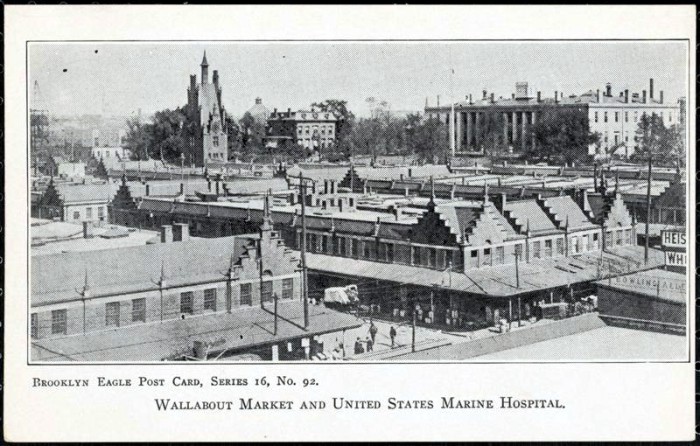
Tubby also designed several eclectic Flemish inspired fire houses and police stations in Brooklyn. These stations too, are masterpieces, and all are now individual landmarks.
So with that body of work either under his belt or to be completed, it’s not surprising that Tubby was chosen to on the architects commission for the Brooklyn Carnegie Libraries.
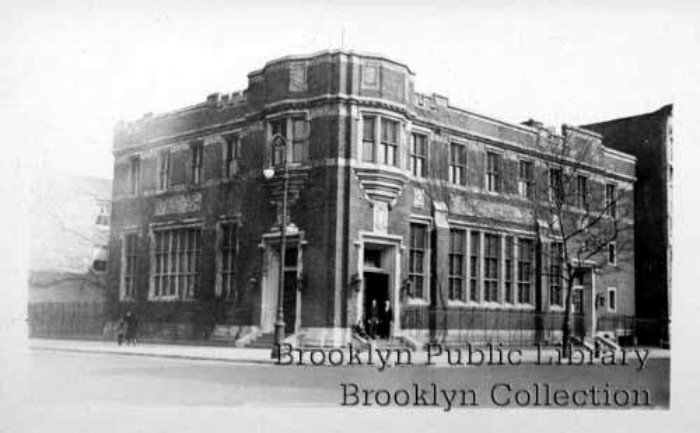
Brooklyn has had its own library system since the Brooklyn Public Library started as the Apprentice’s Library in the late 1820s. Over the course of the 19th century, the system grew, but the libraries were always in buildings that were formerly private houses, or shared space with other institutions.
When Andrew Carnegie established his library grants, he wanted dedicated library buildings built in all of the cities who received his largesse. Brooklyn and Manhattan had separate library systems, so Brooklyn got its own building committee. Amazingly, most of the architects on that committee ended up designing one or more of the libraries. Tubby managed to snag four.
The Stone Avenue Library was designed to be of community service to the growing population of children in Brownsville. By the time the library was finished, in 1914, the neighborhood was primarily Jewish, made up of poor immigrants fleeing the crowded tenement of the Lower East Side, only to move into the less crowded tenements of Brownsville.
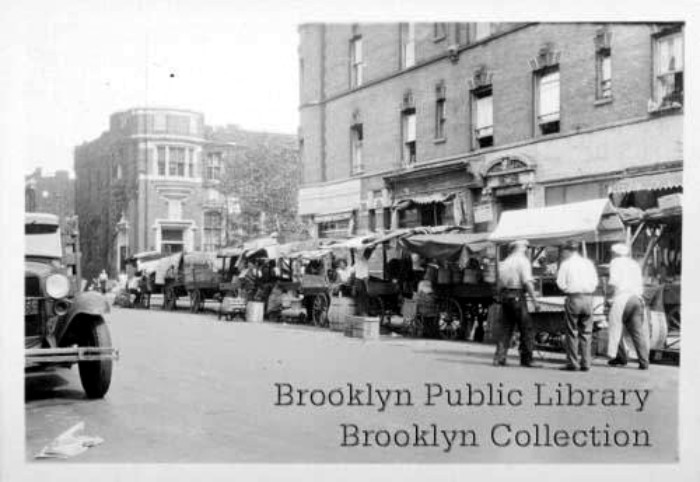
The library originally opened as the Brownsville Children’s Library. Tubby designed a Jacobean influenced building which unlike most Carnegie libraries does not have a grand central entrance. Tubby was going outside of the box here, designing a library building unlike any of the others in Brooklyn or Manhattan, where neo-classicism was the norm.
The library does have other Carnegie prerequisites; large windows, an airy, spacious and well-lit interior, (this one with carved Jacobean ceilings), open stacks, and a reading room with a fireplace.
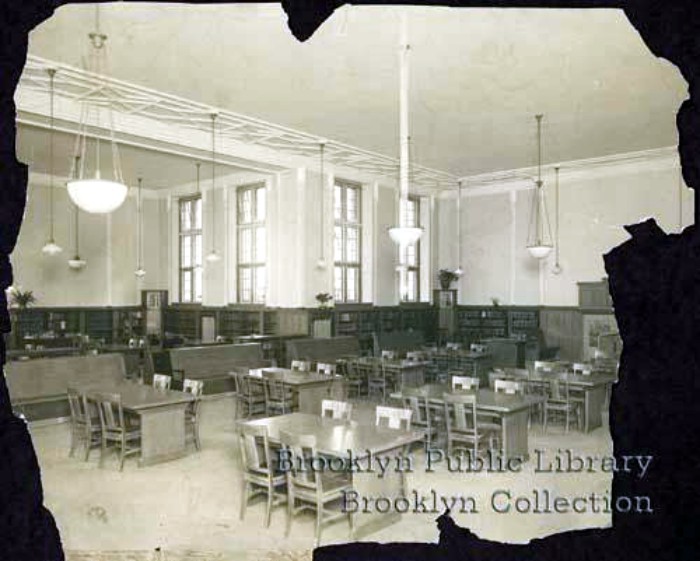
The details on the façade are also a pictogram of Brooklyn and New York City history. A carved stone relief of an open book greets library goers. Around the building can be found carved bands of the Seal of the City of New York. They depict a four blade windmill, two beavers, and two flour barrels. After all, New Amsterdam was built on the Dutch fur trade and exports of flour and other foodstuffs.
Over the years, the library continued to thrive, even as the once solidly Jewish neighborhood became solidly black and Hispanic. The frame and brick tenements and stores were replaced by enormous city-built public housing towers, but the library held on to this corner of the neighborhood.
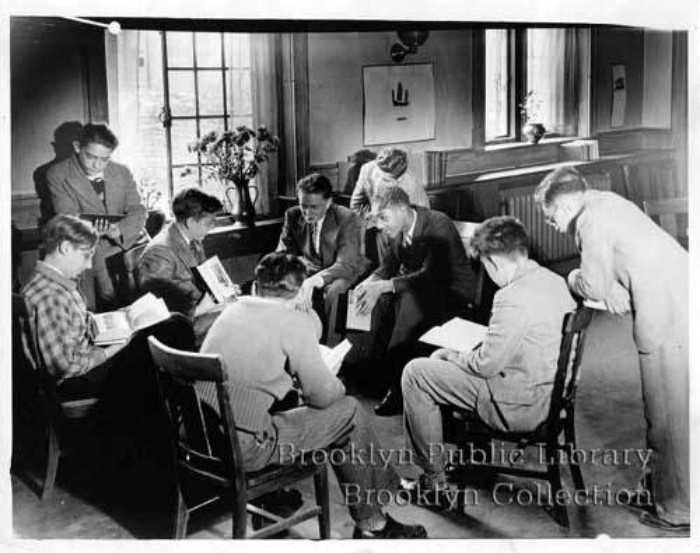
Today, Stone Avenue has been renamed, after a beloved local community activist who had a history with this library. Rosetta “Mother” Gaston dedicated her life to educating black children about their history. She established her Heritage House here in the library, giving classes to young and old about African American history, culture and community pride. She died at the age of 95 in 1981, and the street was named after her soon afterward.
The library has been renovated and renewed. “Modern upgrades” from past decades that were hiding some of the original features have been taken away and original details revealed and repaired. New computers and other equipment have been installed. As Andrew Carnegie wished, the library still educates young minds.
Top photograph: Kate Leonova for PropertyShark.
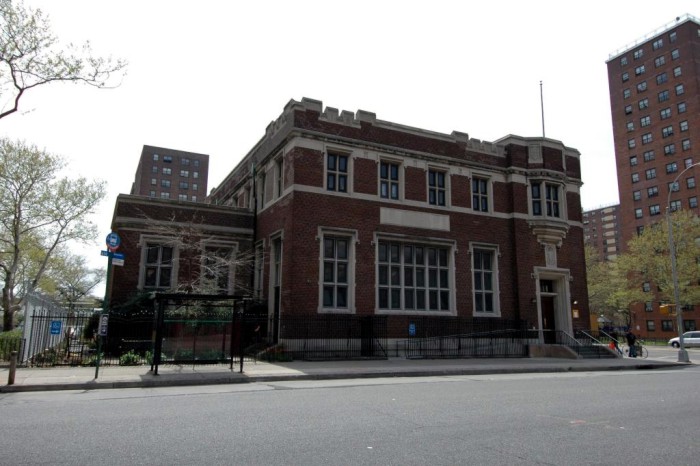








” Tubby was one of Brooklyn’s most talented and well-rounded ” is MM trying to start a pun-fest?